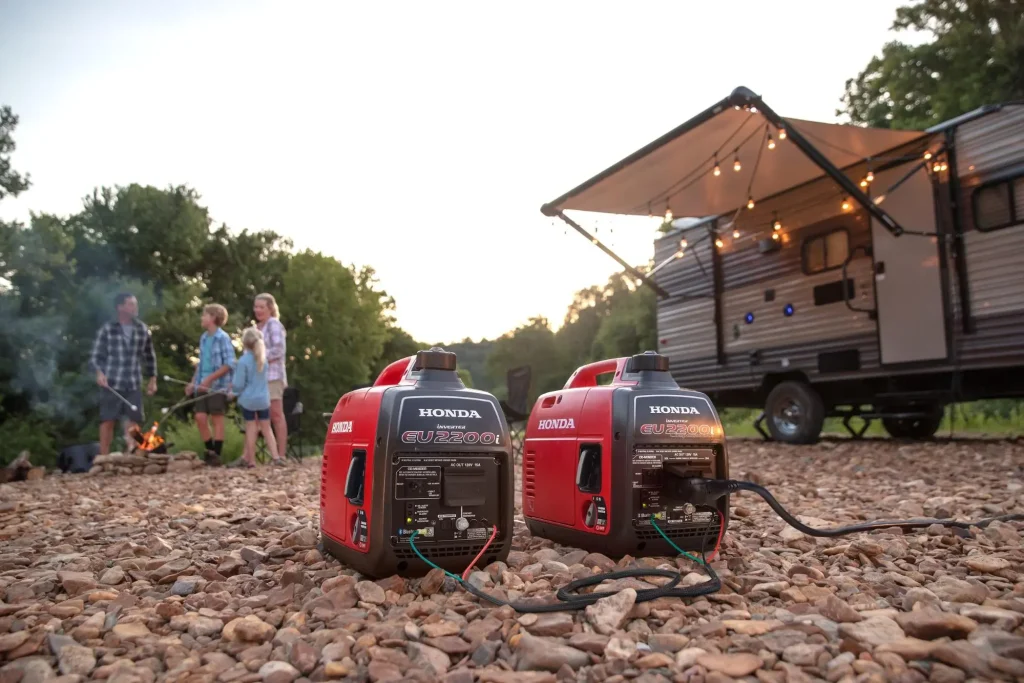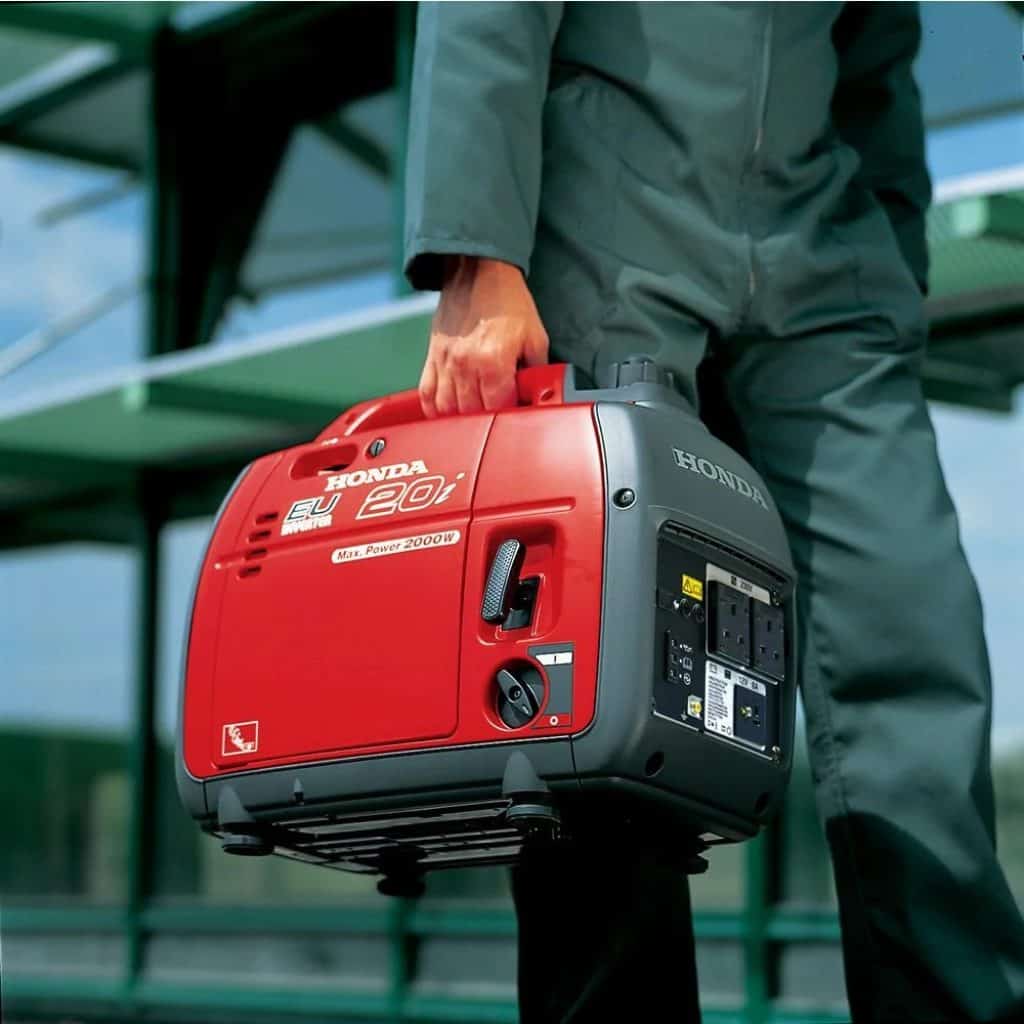Hey there! Are you looking to buy a portable generator but don’t know how to make sense of all the power output specifications? You’re not alone! Understanding what each specification means can be confusing, especially when you want to ensure you make the right purchase for your needs.
That’s why I’m here to help.
In this article, I’ll be decoding power output specifications in portable generators so that you can make an informed decision and rest assured that you have the right generator for the job.
Let’s get started!

Wattage
When it comes to portable generators, wattage is an important factor to consider. I’m sure you’ve seen the term ‘wattage’ floating around before, but what exactly does it mean?
Basically, wattage is a measure of how much energy a generator can produce. It tells you the maximum amount of power that your generator can supply at any given time.
Wattage is measured in units called watts (hence the name). The higher the wattage rating, the more powerful your generator will be and the more appliances it will be able to power simultaneously.
It’s important to calculate your total wattage requirements in order to make sure you have enough power for all of your appliances and devices. Knowing your wattage needs helps you select the right size portable generator for your needs.
If you choose one with too low a wattage, it won’t be able to power all of your appliances at once; if you go too high, you’ll be spending more money than necessary on something that doesn’t actually meet your requirements.
Understanding wattage can help ensure that you get a generator that meets all of your needs without breaking the bank. Moving on from wattage, amperage is another important factor to consider when selecting a portable generator.
Amperage
Amperage is an important factor when it comes to portable generator power output specifications. It’s the measure of electrical current, and it’s essential for powering your most demanding applications. Generally speaking, the higher the amperage, the more powerful your generator will be. That means you can get more out of your machine and complete projects faster.
When shopping for a portable generator, you should pay special attention to the amperage rating as this will determine what kind of jobs you’ll be able to do with it. If you’re looking for a generator that can handle tough tasks like welding or running industrial-grade machines, then you should look for one with a higher amperage rating.
On the other hand, if you just need something for occasional use around the home or on camping trips, then a lower amperage rating may be enough to get the job done.
Knowing how much amperage your generator has will help ensure that you don’t overwork it and end up damaging it in the process. It’s also important to consider what type of plug outlets your generator has and make sure they are compatible with all of your devices before making a purchase.
With this knowledge in hand, you can make an informed decision on which portable generator is right for you. Now let’s take a look at voltage – another essential element in understanding power output specifications.
Voltage
Voltage is an important factor to consider when buying a portable generator. It’s the amount of electrical energy available to power your appliances. When shopping for a generator, it’s important to know the voltage you need in order to power your devices safely and efficiently.
The most common household voltage is 120 volts, but some appliances require more or less than this. Depending on what you plan to use your generator for, you’ll need to determine the type of voltage that best suits your needs.
Portable generators usually come with either 120-volt or 240-volt outlets, so be sure to check which one is right for you. It’s also important to check the wattage of any appliance you plan on using with the generator. This will help ensure that the generator can provide enough power for your appliance and can prevent overloading or damage due to insufficient wattage.
With these factors in mind, you should be able to find a portable generator that meets all your needs. Now let’s look at AC output and how it works with portable generators.
Ac Output
The AC output of a portable generator is an important factor to consider when shopping for one. AC stands for alternating current, which is the type of power that comes out of wall outlets in your home. It has a voltage range of 120V and a frequency range of 60 Hz.
I’m sure you’re wondering what these numbers mean and how they affect you. Well, let’s break it down with this handy table:
| Voltage | Frequency | Power Output |
|---|---|---|
| 120V | 60 Hz | 1,800 watts |
| 240V | 30 Hz | 1,000 watts |
| 240V | 50 Hz | 2,000 watts |
| 240V | 60 Hz | 2,400 watts |
As you can see from the table above, the higher the voltage and frequency are, the more power is available for use. This means that if you need more power than can be provided by 120V/60Hz AC output – such as for running a large appliance like an air conditioner – then it’s worth looking into models with higher voltage and frequency ratings to make sure you get enough electricity to meet your needs. With this knowledge under your belt, you’ll have no problem finding the perfect portable generator for your needs.
Dc Output
The DC output from portable generators is an important factor when it comes to powering electronics like lights, tools and appliances. When selecting a generator that has DC output as well as AC output, you must pay attention to the voltage, wattage and amperage of the device.
The voltage determines how much power will be delivered to your devices. If the voltage is too low, then not enough power will be supplied and your device won’t work properly. On the other hand, if the voltage is too high, then there’s a risk of damaging delicate electronics. Look for generators with adjustable voltages if you want maximum flexibility.
Wattage is an indication of how much energy can be drawn from the generator at any given time. You’ll need to make sure that the wattage rating on your generator matches up with the wattage requirements for your electronic devices or appliances. Otherwise, you may overload the system and cause serious damage to both your generator and your equipment.
Having considered the importance of DC output from portable generators, let’s now turn our attention to another key factor – running watts vs starting watts – which affects their performance capability.
Running Watts Vs Starting Watts
Wow, understanding the difference between running watts and starting watts can be confusing, but it’s important to understand when shopping for a portable generator.
Let’s take a look at how they differ and why it matters.
First, let’s talk about running watts. This is the amount of power that your generator can constantly produce without overloading or overheating. It’s important to know what you plan to power with your generator so you can choose one with enough running wattage.
Next, let’s look at starting watts. This is the surge of power needed to start up appliances like refrigerators and air conditioners. When selecting a generator, pick one with enough starting wattage to power all of your desired appliances.
Knowing the difference between running watts and starting watts will ensure you get the right generator for your needs!
Surge Rating
Now let’s move on to surge rating – an important consideration when looking at portable generators.
This is the amount of power you can draw from a generator for a short period of time. It’s typically higher than the continuous running wattage, allowing you to start up devices that have high power demands at startup.
If your needs include running large electric motors, like a space heater or refrigerator, then you’ll need to pay attention to the surge rating.
The surge rating is also often referred to as peak wattage and it’s usually printed on the side of the generator, either in watts or amps.
This number tells you how much power you can pull from your generator in short bursts – it’s not an indication of how long your generator will last under this load.
It’s important to keep this information in mind so that you don’t overload your generator and damage it or anything else connected to it.
So when shopping for a portable generator, make sure to check both the running wattage and the surge rating to ensure that it can handle whatever job you need done.
That way, you’ll be able to get the most out of your purchase and avoid any potential problems down the line.
Now let’s look into what types of receptacles are available on portable generators.
Receptacles
We’ve discussed the power output of portable generators and how to read the specifications. Now, let’s take a look at receptacles, which are the end points from which you can draw power from.
The type of receptacles you’ll find on a generator depends on the wattage rating. Generators with wattage ratings up to 3,750 watts will usually have one 120V duplex outlet and one 120V locking outlet.
For higher wattage ratings, like 6,000 to 10,000 watts, you may find multiple 120V duplex outlets and a 240V locking outlet for powering larger equipment.
Knowing what type and how many receptacles your generator has is important so that you know exactly how much power you can get from it. This is also useful when determining whether or not your generator has enough outlets for all your devices or if an extension cord is necessary.
With this knowledge, you can confidently choose the right generator for your needs and start powering up! Now that we’ve covered receptacles, let’s move onto power management strategies.
Power Management

Without proper power management, a generator will not be able to provide on-demand energy for your needs. Taking the time to understand the specifications of your portable generator can help you make sure it is up to the task.
For example, the maximum wattage output and running wattage output are important figures to consider when evaluating the capabilities of a generator. Maximum wattage refers to how much power the generator is able to produce at one time, whereas running wattage refers to how much power it can consistently supply over an extended period of time.
The type of fuel used by your generator will also affect its performance. Different fuels have different energy densities and burn rates that affect how efficiently they generate power. Gasoline generators tend to have more powerful outputs than diesel generators, but they also require more maintenance due to their higher volatility and combustibility. Diesel generators are generally quieter than gasoline models but may not have as high an output capacity.
Knowing what kind of fuel your generator uses and its maximum and running wattage outputs will give you a better idea of its capabilities so you can decide if it’s right for your needs. With this information in hand, you can now move onto evaluating noise levels from the generator in order to determine whether or not it’s suitable for use in certain environments or situations.
Noise Levels
I know that noise levels are a major concern when buying a portable generator, so I’ve done my research to provide you with the facts. In the table below, I’ve compared the noise levels of three popular portable generators.
| Generator | Decibel Rating | Noise Level |
|---|---|---|
| Honda EU2200i | 48 dB(A) | Quieter than normal conversation |
| Generac GP3000i | 65 dB(A) | Louder than normal conversation |
| WEN 56200i | 52 dB(A) | Normal conversation level or slightly louder |
All three of these generators are fairly quiet for their power output, but if you’re looking for something inaudible from a distance, then the Honda EU2200i is your best bet. Its decibel rating of 48 dB(A) is much quieter than most other models out there and will keep conversations in your backyard or campground uninterrupted. The WEN 56200i is almost as quiet as the Honda at 52dB(A), while still providing plenty of power for all your needs. For those who don’t mind a bit more noise and want maximum power output, then the Generac GP3000i is an excellent choice with its 65dB(A).
No matter which model you choose, you can rest assured that none of them will be too loud to use in most settings and they’ll all provide reliable power whenever you need it.
Frequently Asked Questions
How Long Can A Portable Generator Run Continuously?
Wondering how long your portable generator will be able to run continuously?
It really depends on the size of your generator and the load you’re placing on it. Generally speaking, smaller generators can only run for a few hours before needing to be refuelled. However, larger generators can typically run for around 10-12 hours before needing a break.
Of course, this is all dependent on the amount of power you’re using, so make sure you check the specs of your unit before relying on these estimates.
How Much Fuel Does A Portable Generator Use?
When buying a portable generator, you’ll want to know how much fuel it uses. After all, you don’t want to be stuck out of juice when you need your generator most!
Generally speaking, the amount of fuel a portable generator uses will depend on its size and power output. Larger generators tend to use more fuel than smaller ones, as do those that have higher power outputs. However, this can vary from model to model so it’s important to check the specifications before making a purchase.
Is It Safe To Use A Portable Generator Indoors?
It’s not safe to use a portable generator indoors as they produce toxic carbon monoxide gas.
It’s important to keep the generator outside and far away from any open windows or doors.
If you do need to use it indoors, make sure you have proper ventilation and that the area is well-ventilated.
Additionally, be sure to read all of the instructions in the manual before using your generator indoors.
What Is The Warranty Period For A Portable Generator?
It’s important to know the warranty period for your portable generator, so you can be prepared if any issues arise.
Generally speaking, most portable generators come with a 1-3 year limited warranty. This means that the manufacturer will repair or replace defective parts during that time frame, as long as it was used correctly.
It’s always a good idea to check with the manufacturer before buying to make sure you understand the full terms and conditions of their warranty policy.
How Often Should I Have My Portable Generator Serviced?
It’s important to have your portable generator serviced regularly.
Not only does it ensure that your generator is running at its peak performance, but it can also help you avoid costly replacements and repairs down the line.
It’s recommended that you service your generator at least once a year, or after every 100 hours of use – whichever comes first.
Make sure to check with the manual for any specific recommendations on servicing schedule.
Conclusion
In conclusion, portable generators are a great way to provide emergency power when the power goes out. But before you purchase one, it’s important to make sure you understand the power output specifications.
Knowing how long it can run continuously, how much fuel it uses, and whether or not it is safe to use indoors can help you make an informed decision. Additionally, be sure to find out about the warranty period and service schedule for your generator.
By taking these steps and understanding the power output specifications of your portable generator, you can ensure that you have a reliable source of emergency power when needed.





